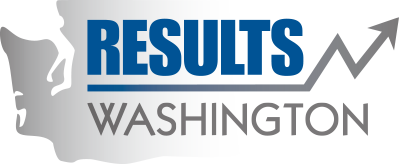Archived: Puget Sound Chinook populations
Puget Sound Chinook salmon are a cultural icon of the Pacific Northwest. Chinook salmon spawn in rivers and streams and migrate widely throughout the northern Pacific Ocean as adults before returning to their natal streams 3-5 years later to spawn. This long migration along with Chinook size, which can exceed 30 pounds, make Chinook not only highly prized by anglers and commercial fisherman, but also critical for the ecosystem. Chinook are a favorite food of orca whales and provide an annual source of marine nutrients back to the freshwater river and stream ecosystems. Puget Sound Chinook are about one-third as abundant as they were in the early 1900s and were listed in 1999 as “Threatened” under the federal Endangered Species Act.
We are on track to meet this measure's target. Currently, four Puget Sound populations are demonstrating increasing trends representing progress toward the goal of five populations by 2016. This trend is in the right direction; however, a majority of the Chinook populations in the Puget Sound are still declining, and most of the populations in the Puget Sound remain at chronically low abundance levels below federally established recover goals.
- Prioritizing, funding, and implementing near-shore restoration actions through completion of Army Corps of Engineer General Investigation Study and Estuary Salmon and Restoration Program (ESRP) grant program.
- Implementing mark-selective fisheries.
- Implementing hatchery reform.
- Developing a Puget Sound Chinook Harvest Management Plan consistent with Puget Sound recovery.
- Investigating early marine survival in the Salish Sea.
Get involved in salmon recovery! Recovering and protecting salmon starts with each of us in our local communities. From working to ensure your local land use decisions reflect local salmon recovery plans, helping with habitat restoration projects, to following important fishery protection regulations:
For information to help with salmon habitat recovery projects, click on this link: http://www.rco.wa.gov/salmon_recovery/what_you_can_do.shtml
To better understand and follow land use plans that protect salmon habitat, click on this link: http://wdfw.wa.gov/conservation/phs/
To better understand and follow fishery protection regulations, click on this link: http://wdfw.wa.gov/fishing/salmon.html
We also encourage you to participate in organizations that are partnering with us to achieve this measure. They can be found at this link: https://fortress.wa.gov/dfw/score/score/recovery/partners.jsp
For information on the State of the Salmon, click on this link: http://stateofsalmon.wa.gov/
